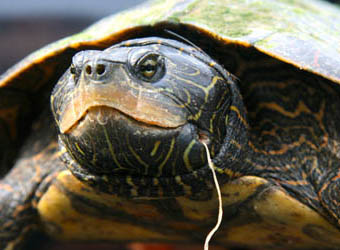 Endangered on the Susquehanna
Endangered on the Susquehanna
From the inception of the organization, Teal Richards, a research biologist with Towson University, has offered a wealth of knowledge and advice on how we could contribute to wildlife conservation on a local scale. A little over a month ago, we had the opportunity to repay her by helping to facilitate the surgery to remove a swallowed fishing hook from a female northern map turtle she had rescued. Teal has been studying and documenting her findings on the state endangered northern map turtles in the Susquehanna River area for the past few years. This in an effort to understand its population status here in Maryland and the effects of the hydroelectric dam on its lifecycle and reproduction. During her continued tracking and capture efforts, she came across this otherwise healthy individual that had sadly made the wrong choice to ingest a snared piece of bait and displayed a portion of monofilament line protruding from the corner of its mouth. A female at reproductive age like this is particularly valuable to the population since so many turtle nests are predated by raccoons and other mammals along the river. Few turtles that hatch ever survives into adulthood and, furthermore, it can take a decade for one to reach sexual maturity. Knowing how serious the situation was, Teal quickly contacted our wildlife hotline to seek our advice on what to do with the turtle. Understanding the sensitive nature of this species, we suggested that it be taken Chadwell Animal Hospital in Abingdon, MD to have its condition assessed and to see if the hook could be safely removed.
The turtle was gladly seen by the friendly staff at Chadwell and a full-hearted effort was made to try to remove the hook orally. Unfortunately, the determination had to be made to perform surgery on the turtle in order to rid it of the potentially deadly foreign object embedded in its stomach. Doctors Keith Gold and Tamie Haskin felt fully confident they could remove the hook and the turtle would enjoy a full recovery. Since this is a state endangered species, the Maryland Department of Natural Resources (DNR) was contacted to seek their authorization to remove this individual from the wild for approximately one month so it could be operated on and recover. They not only approved our team to move forward, but were grateful that all of these individuals cared enough to volunteer their time and money to give this special creature another chance to contribute to the furthering of its kind.
The very physical feature that has protected turtles for millions of years actually makes it much more difficult to provide medical care. In order to enter the digestive tract of the turtle and remove the hook, a portion of its plastron (lower shell) would have to be carefully removed. With the incredible precision that is imperative for any great surgeon, the turtle was opened up and the hook completely removed. The tissue is stitched back up and the removed piece of shell inserted back into place. An epoxy was applied across the plastron to stabilize and set it in much the same fashion as one would a cast on someone’s arm. The surgery was a major success. The knowledge and skill of the Chadwell staff truly saved this turtle’s life but its journey away from home was not yet complete.
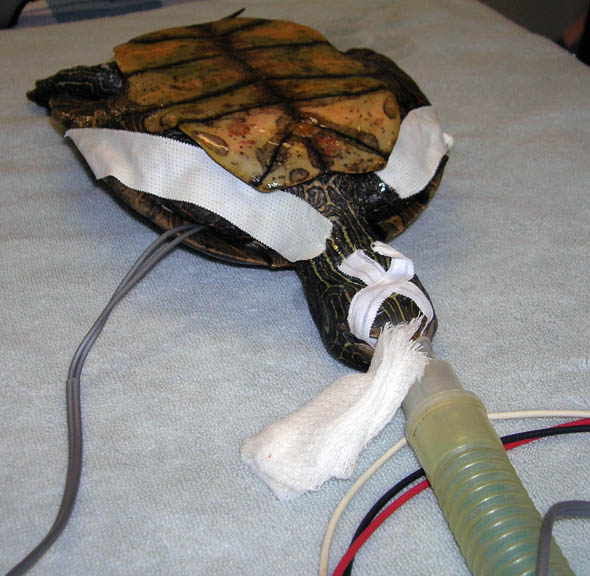
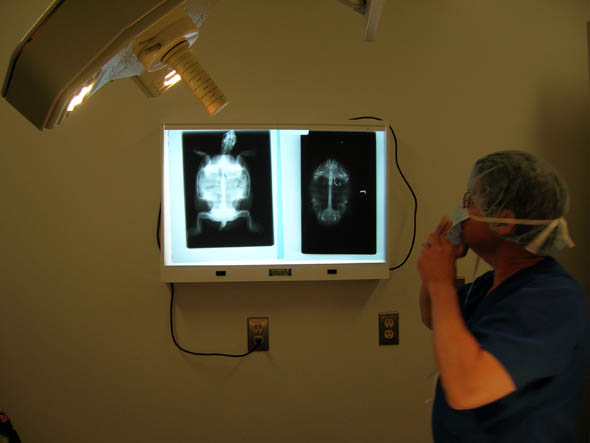
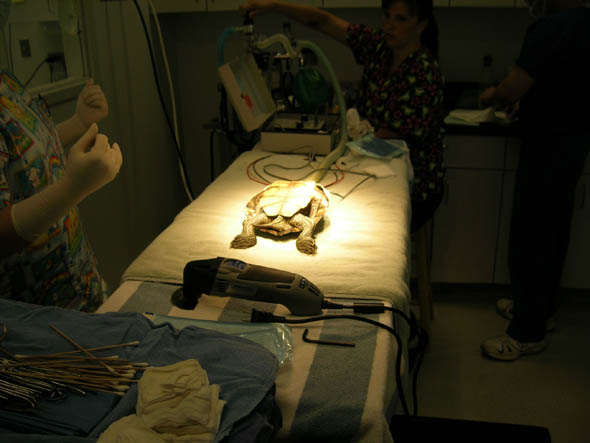
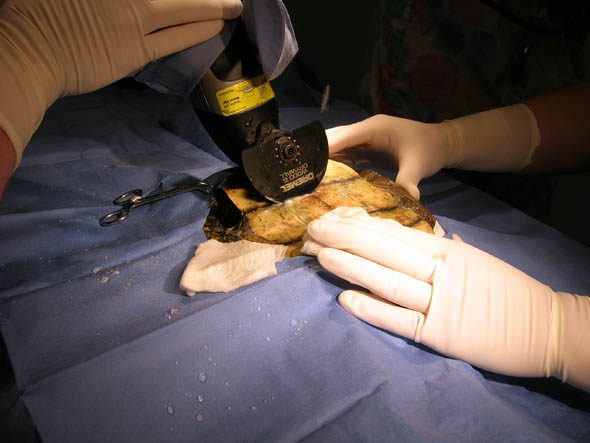
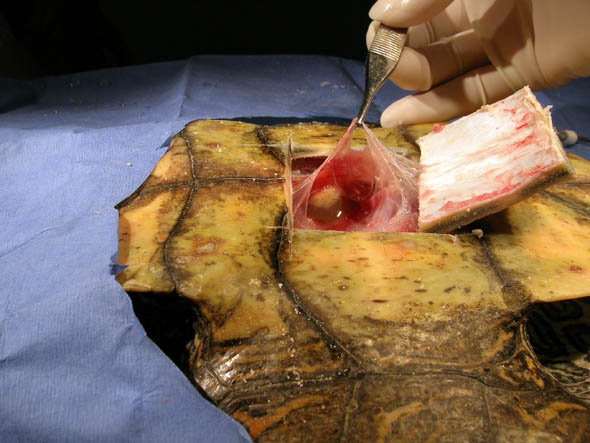
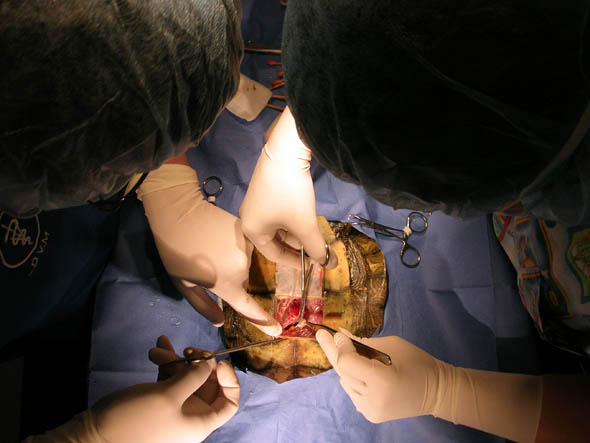
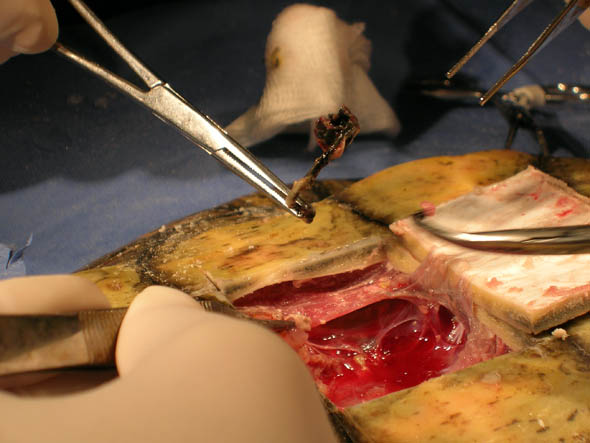
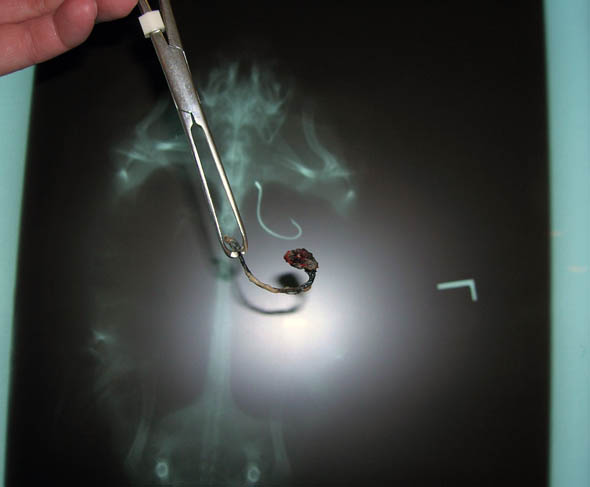
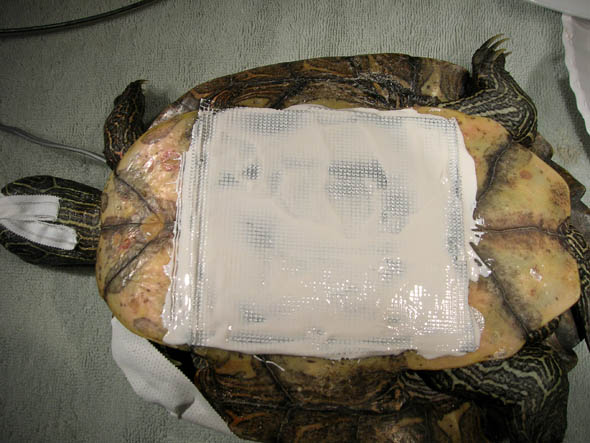
After several days of observation at the Animal Hospital the turtle was returned to Teal so it could be monitored during its month long rehabilitation. Normally our rescued wildlife is gladly taken in by the Phoenix Wildlife Center in Baltimore County for recovery, but this turtle was a special case. At the request of DNR, the turtle was to remain with Teal (who holds a permit to possess the endangered turtle during her research), kept separated from other wildlife, and given its natural diet of snails and other native mollusks. The turtle was kept in a rehabilitation enclosure not far from its Susquehanna River habitat until it could be brought back into Chadwell to be approved for release into the wild.
Once seen by the veterinarian staff and given a clean bill of health, the homesick reptile was ready to head back to the sacred Susquehanna where it could return to swimming the mighty current and basking in the warm summer sun. Teal arranged the release of the turtle back to the exact location where it was found and attached a radio transmitter so with a little luck it can be tracked down, recaptured, and have its health observed, so we can verify that it is capable of living out the rest of its life as nature had intended before its unfortunate encounter with our modern world.
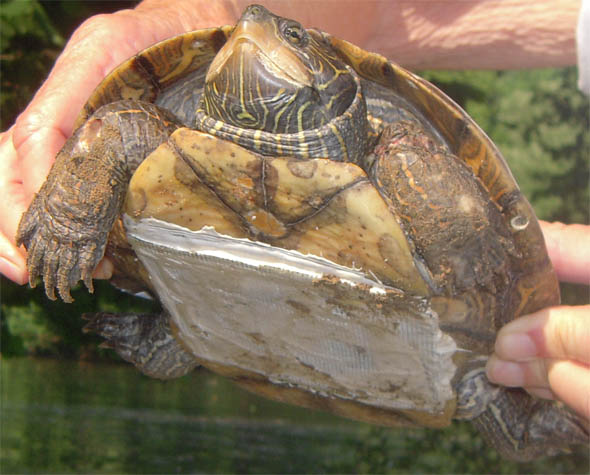
Patched on the bottom to allow the plastron to heal and topped with a radio transmitter for future tracking, the map turtle was released back into its home waters on the Susquehanna River.
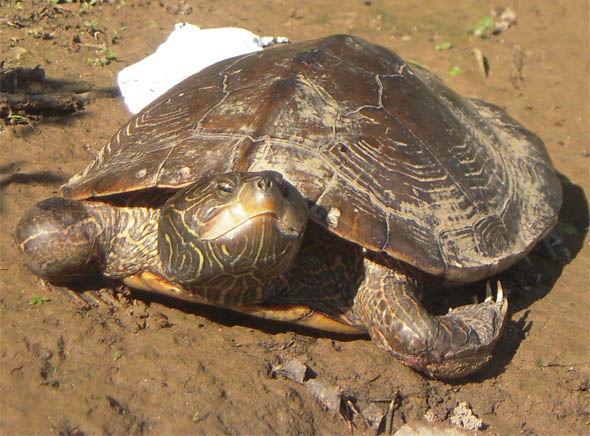
A video of the map turtle’s release and return to the same spot where it had been found on the Susquehanna River can be viewed below:
Surgery photos by Melissa Goodman
Release photos and video by Teal Richards

